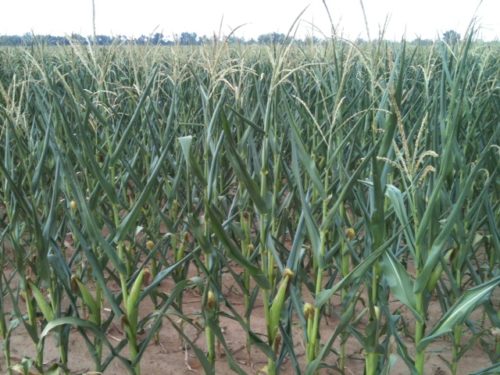Harvesting Drought-Stressed Corn for Silage
Posted: July 2, 2021 | Written By: Troy Brown, Form-A-Feed Forage Product Manager

Drought-stressed corn can be a very good forage source if harvested properly. On the other hand, it can be a complete train wreck if harvested incorrectly. Timing is critical, and it is very important that one does not wait too long when making the decision to harvest drought stressed corn as silage vs. waiting for a critical rain to try and save the plant. Following are a few key bullet points.
- Fermentation: Corn should be harvested for silage when the whole plant dry matter is between 30 and 40%. Moisture is critical for proper fermentation. If harvested to dry, critical nutrients will be lost during the inefficient fermentation. Moisture is also critical for proper packing to eliminate trapped air, improving fermentation speed and efficiency. It is not recommended to harvest corn as silage over 40% dry matter.
- Nitrate challenges: During the silage fermentation process the fermenting bacteria utilize plant nitrates for their growth process. Therefore, nitrate concentrations of drought-stressed corn plants will be lower after the plants have undergone a proper fermentation process.
- Safety: Ensiling of potentially high-nitrate-containing forages can also result in production of various nitrogen oxide gases. These gases are highly toxic to humans and livestock. The danger of silo gas can exist from ensiling time to four weeks later. During this period, do not enter a silo without first running the blower for 15 to 30 minutes. Using a self-contained breathing apparatus is highly recommended. Any person exposed to silo gas should seek immediate medical attention to combat delayed poisoning symptoms.
- Inoculants: Corn is fermented by natural occurring bacteria as well as added bacteria (inoculants), that convert plant sugar to a VFA, acidifying & stabilizing the feed during storage. However, silage-fermenting bacteria populations will be much lower during drought conditions. Adding a high quality Pro Sile inoculant is critical under these conditions.
If you have any questions about getting through drought this summer, please do not hesitate to reach out to a Form-A-Feed representative to find a solution that works best for your operation!